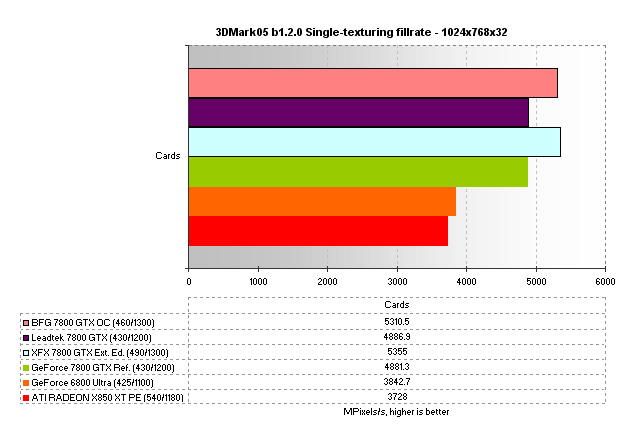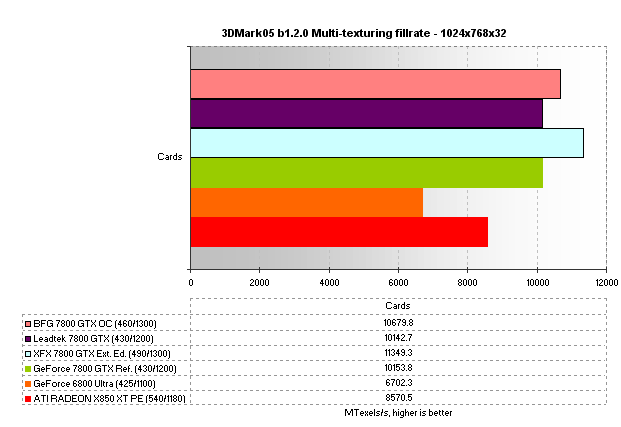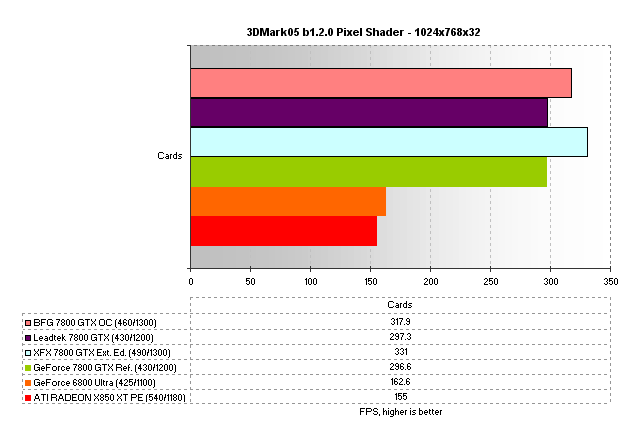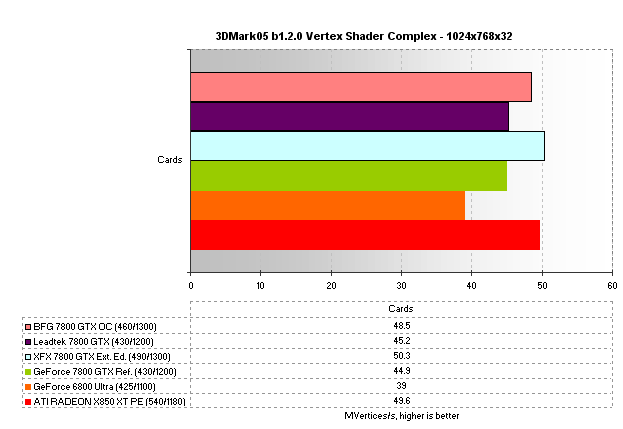Fillrate and shading
Let's take a look at the cards' basic vital statistics.| Card | BFG 7800 GTX OC | Leadtek 7800 GTX | XFX GeForce 7800 GTX | NVIDIA reference 7800 GTX | GeForce 6800 Ultra | ATI RADEON X850 XT PE |
| Interface/speed | PCI-Express | PCI-Express | PCI-Express | PCI-Express | PCI-Express | PCI-Express | Onboard memory | 256MB | 256MB | 256MB | 256MB | 256MB | 256MB | Core speed | 460MHz | 430MHz | 490MHz | 430MHz | 540MHz | 425MHz | Rendering pipelines | 24 | 24 | 24 | 24 | 16 | 16 | Fillrate (multi-texturing) | 11.04GTexels/s | 10.32GTexels/s | 11.76GTexels/s | 10.32GTexels/s | 6.8GTexels/s | 8.64GTexels/s | Memory interface | 256-bit | 256-bit | 256-bit | 256-bit | 256-bit | 256-bit | Memory speed | 1300MHz | 1200MHz | 1300MHz | 1200MHz | 1100MHz | 1180MHz | Memory bandwidth (max) | 41.6GB/s | 38.4GB/s | 41.6GB/s | 38.4GB/s | 35.2GB/s | 37.76GB/s | Cheapest online price | £420 | £379 | £445 | £370 | £299 | £299 |
Let's see how the cards compare against one another in 3DMark05's feature tests. Good performance here correlates well with exemplary performance in games where the cards' throughput is the limiting factor.


Leadtek's GeForce 7800 GTX's performance matches the reference card's, which is no great shock as both run at identical frequencies. XFX's Extreme Edition, thanks to a 490MHz core, noses ahead of BFG's 460MHz-clocked 7800 GTX. Note just how far in front GeForce 7800 GTXs are of GeForce 6800 Ultra and ATI RADEON X850 XT PE's fillrate. 24 juicy rendering pipelines makes for a hugely parallel powerhouse of a GPU.

Pixel shading is streets, nay miles ahead of the previous generation cards' XFX's GeForce 7800 GTX is more the twice as fast in this test than a GeForce 6800 Ultra or ATI X850 XT PE.

Vertex shading isn't quite so impressive. 8 vertex shaders hum along at between 430-490MHz.









